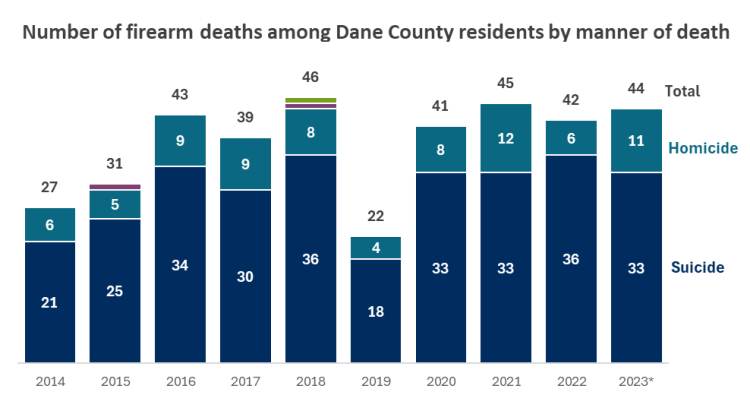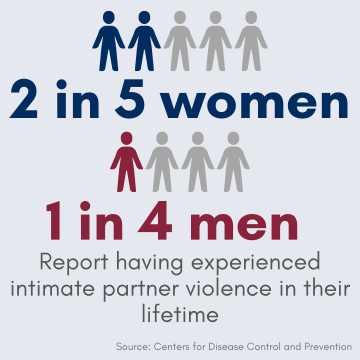Violence Data
We use both internal and external data to guide our work.
- Internal data come from the patterns and trends we observe through our community violence intervention work and CSIT.
External data come from police calls for service and violent crime trends, trends in fatal and non-fatal gunshot wounds, information shared by our partners and national data.
Gun Violence
Over the last decade an average of 38 people per year in Dane County lost their lives to a firearm. Most of these deaths (~80%) are due to suicide. A small number of deaths were unintentional (purple) or of unknown intent (green).




